Sales teams’ main pain point is finding people to reach out to in the first place.
A sales lead database is the perfect solution for this problem, as you’ll have a wide variety of leads at your fingertips.
But how can you use a database for lead generation?
What is a sales lead database?
A sales lead database is essentially a centralized collection of data about potential customers or clients.
It’s based on specific criteria that will then help you filter through millions of contacts. With a sales lead database, you can access leads’ contact details, industry, company size, and more.
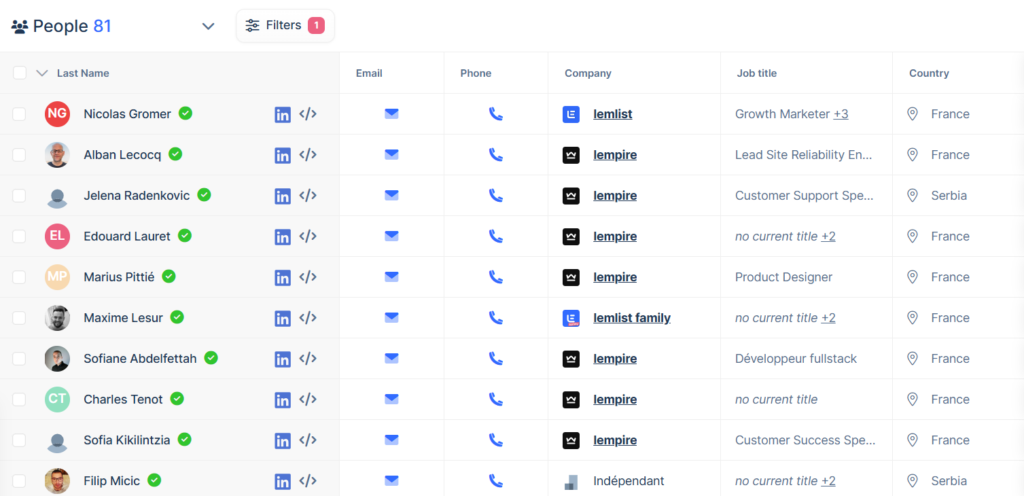
However, a sales lead database is more than just lists of data.
It’s a dynamic tool that can help you find and contact potential customers, thereby streamlining the sales process and driving business growth.
You can use this data to:
→ generate more leads
→ save time & money
→ close more sales
Benefits of a sales lead database
As we mentioned, a sales lead database is more than simply an endless list of leads you can reach out to in order to make more sales.
There are many benefits to using this type of tool for your lead generation, but there are 3 main benefits:
1. Streamline your sales process
By having all the data in one place, you’re cutting down on never-ending hopping from one tool to another to find leads’ personal and professional data, verify their contact information, contact them, and convert them into paying customers.
Lead databases will typically provide already verified data.
Additionally, if you get a database that is natively integrated into an outreach tool, you can save one more step as you will be able to add them to your campaigns and reach them directly from the same platform.

2. Target the right people
B2B sales lead databases come with advanced filters that allow you to narrow down your prospects based on the personas that are most likely to buy your product or services.
By using filters that track intent, buying signals, and technologies, you ensure that you’re reaching the most appropriate leads for your business.
Essentially, this will result in fewer unanswered emails, and increase your reply rates.
3. Increase your conversion rate
Targeting the right leads at the right times means that you’re contacting a higher percentage of people interested in your business.
Therefore you can tailor your outreach efforts to meet their specific pain points knowing that they will be actually interested in your solution.
This will inevitably lead to higher lead conversions. AKA more sales!
How to choose the best B2B sales lead database
It all starts by defining what you’re really looking for.
Obviously, not all databases or tools are going to be the right fit for you. We’ll leave you with a few key features that will determine whether you should invest in a specific database or not:
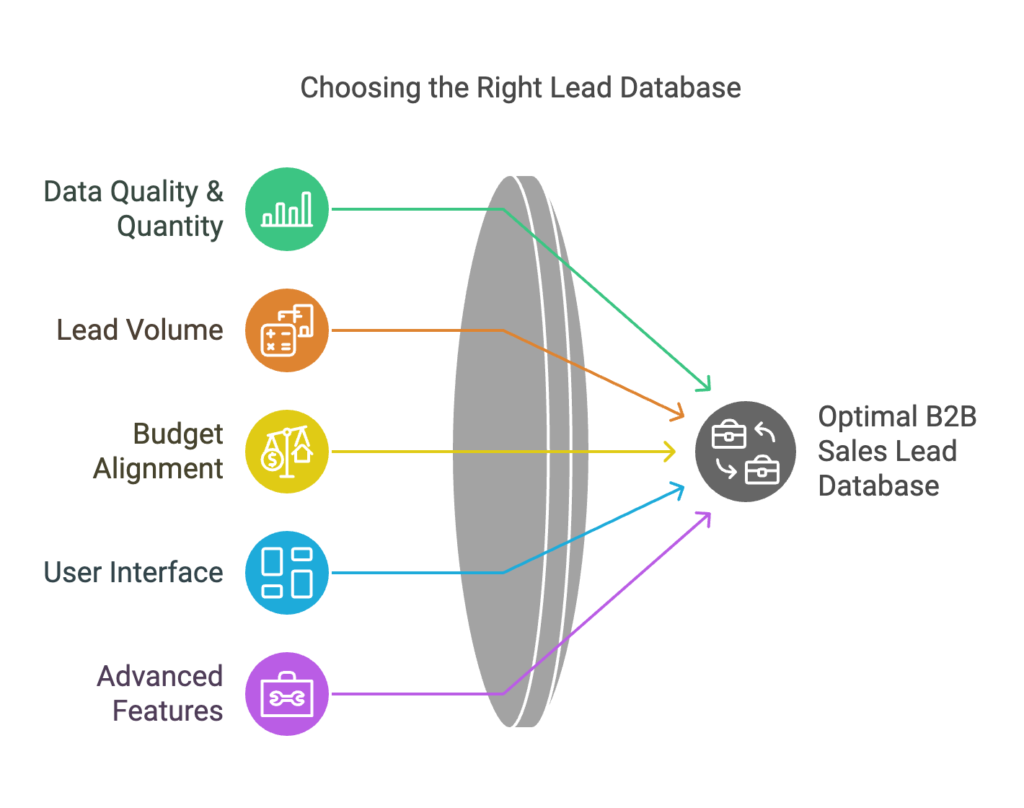
1. Check the quality and amount of data
If you’re going for a multichannel and personalized approach, finding just emails won’t cut it.
So you’ll need to find a sales lead database that offers emails, LinkedIn profiles, phone numbers, company names, and whatever other information you need.
Additionally, the database should contain accurate, up-to-date, and comprehensive information about potential leads.
If a database has a low rate of invalid contact details, that means it’s not worth it.
2. Consider the number of leads in the database
A larger database typically means a wider pool of potential leads, increasing your chances of finding the right prospects for your business.
Particularly if you want to build a large lead list, choosing a database with only a few thousand contacts will not make a scaleable option.
3. Value your budget and the database’s pricing
It’s important to consider your budget and understand what features and capabilities are included in the pricing before you purchase.
Keep in mind the money you’ll be saving by being able to unsubscribe from other lead-generation tools that will no longer be necessary.
However, you should also take into account the quality of the database rather than just the pricing.
4. Pick a database with a clean UI
The platform should be easy to navigate and use.
Advanced search capabilities, filtering options, and intuitive interfaces will make it easier for you to sift through the lists of contacts and generate more leads.
5. Make sure the database has additional advanced features
These may include targeted filtering options, comprehensive search capabilities, and the ability to integrate with other tools such as your CRM or marketing automation platform.
It should also provide reliable contact data, including email addresses and phone numbers, to facilitate your outreach efforts.
How to use a sales lead database
With your sales lead database and 4 simple steps, you can start converting more leads.
We’ll give you examples using the lemlist People database.
If you need more information on how to use the People database, head over to the lemlist academy. We have an entire module of lessons on how to find leads and their contact information.
1. Define your ICP
One of the first steps in using a sales lead database is defining your buyer persona.
This process involves identifying the demographic, geographic, and psychographic characteristics of your ideal customer and their industry. This helps you tailor your marketing efforts to the specific needs, intent, and preferences of your product’s users.
Crafting your buyer persona can be tricky and time-consuming, which is why with this ICP Generator, you simply have to fill in a couple of questions, and you will receive three examples of your ideal customers via email.
2. Use filters to narrow down your list of leads
Once you know who you want to target exactly, you’re able to decide what filters are relevant to your search.
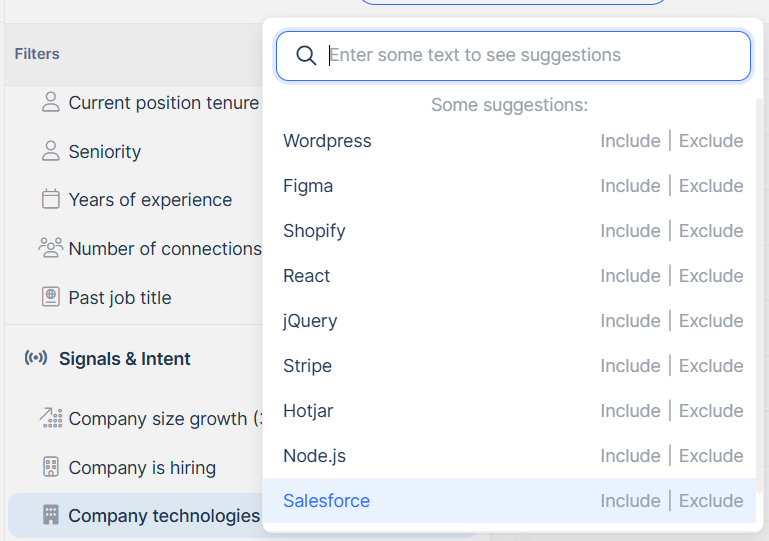
Once you have chosen all of your filters, you’ll be left with a list of people who may be suitable for your next campaign.
3. Verify and enrich your data
Although most of the information will already be verified, if you want to double check, it’s a good idea to run your list through a verification process.
With lemlist’s Email Finder and Verifier, you get 80%+ of valid email addresses.
Additionally, before you run your campaigns, you can choose to enrich your leads to make sure you have complete data to make your personalization stand out even more.
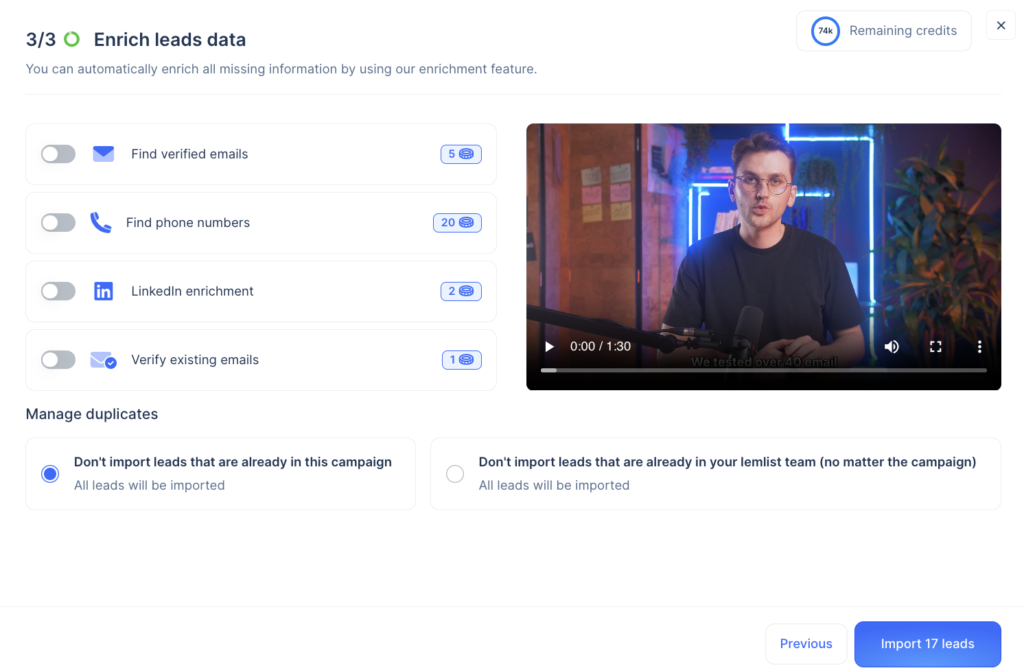
4. Contact your leads
Once you’ve defined your target audience and verified their contact info, it’s time to craft customized outreach campaigns.
Using the email addresses and phone numbers from your leads database, create personalized emails and phone calls that resonate with your potential users.
When you combine your leads database with a tool like lemlist, you can directly import your leads into highly converting multichannel sequences that are powered by AI.
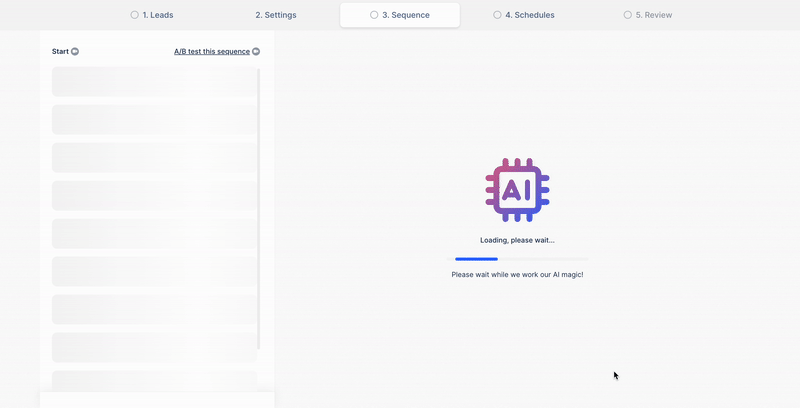
If you want to take your campaign to the next level and boost reply chances
→ add advanced conditions that will auto-adjust your sequence steps based on your leads’ interactions with your message
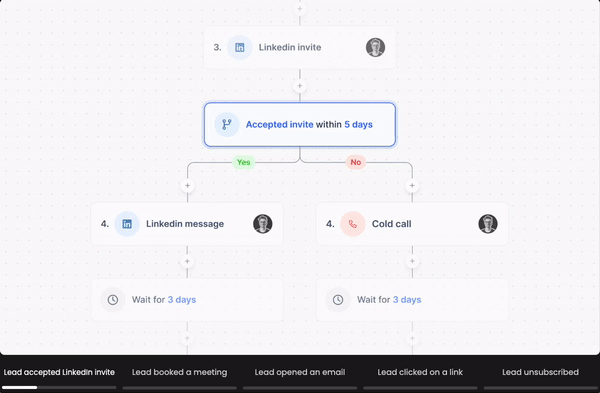
→ send your campaign from multiple sending accounts to reach 4x more leads without the risk of landing in the spam folder
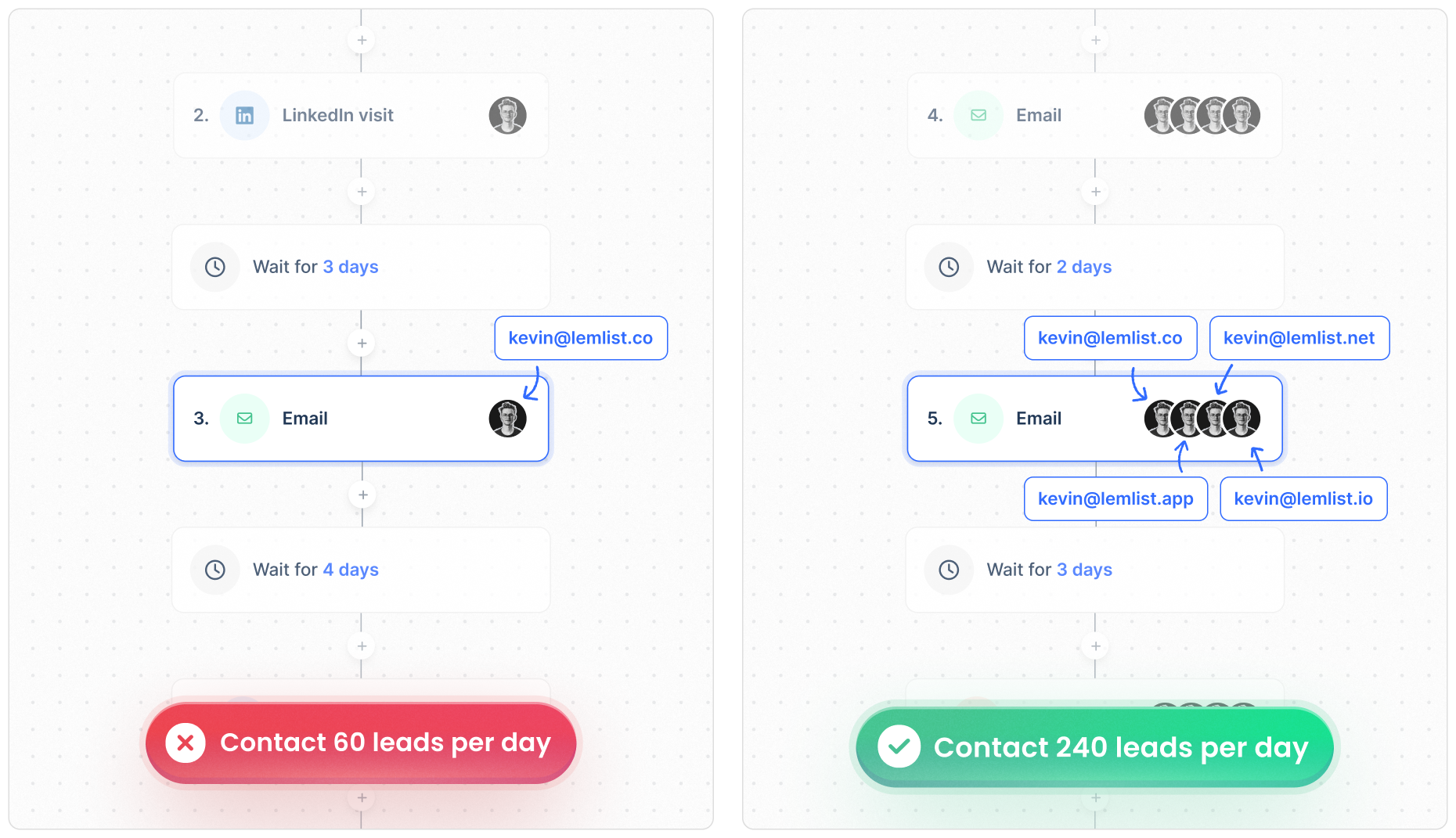
Additional tips to make the most out of your database
Aside from finding and contacting leads, you can make the most out of your database by implementing these 2 tips:
Validate and update your leads frequently
As time passes, the data in your leads database can become outdated or irrelevant.
Contact details change, companies evolve, and customer preferences shift.
So, if you’ve created the database yourself or are using a tool that does not do this for you, you’ll need to regularly check the data for accuracy, remove duplicates, and update any outdated information.
This helps you maintain the accuracy of your database.
If you’re using the lemlist’s b2b lead database, each lead has already been verified by lemlist – so you won’t have to worry about this step!
Integrate your database with CRM and marketing automation tools
Another key aspect of maintaining relevant and reliable lead data is the integration of your leads database with CRM and marketing automation tools.
These tools can help streamline the process of updating and validating your data, saving you time and resources.
If you weren’t already aware, CRM and marketing automation tools can automatically update contact details, track interactions with leads, and provide insights into customer behavior.
By integrating these tools with your lead database, you can ensure your data remains accurate and relevant, which enhances your lead generation and conversion efforts.
With lemlist’s lead database, you can already reach out to leads directly from the database and scale your outreach without an entire operations team!
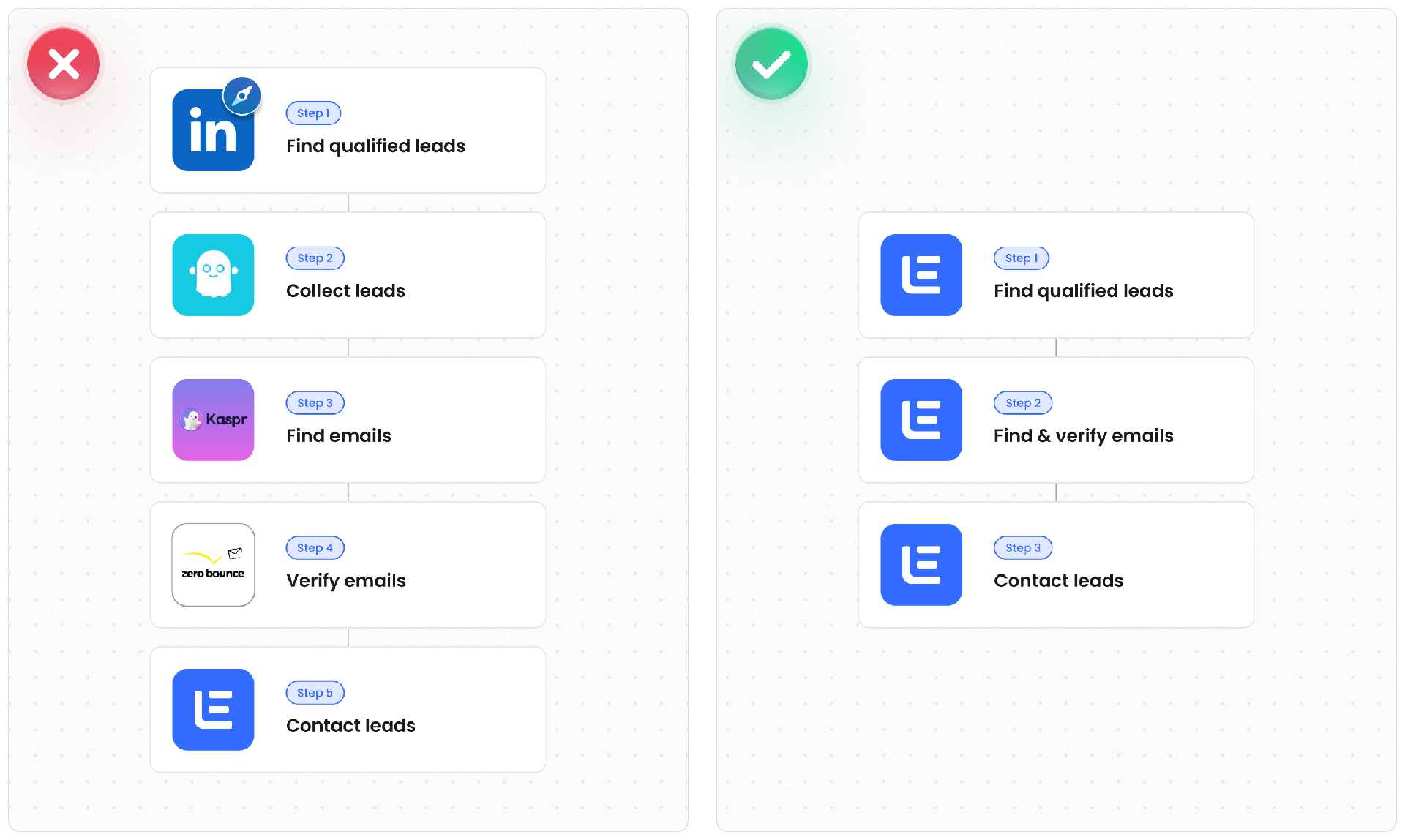
In 2025, cold outreach requires:
1. Finding verified contacts that will reply to you
2. Sending them hyper-personalized campaigns
But, traditionally, this involves:
❌ wasting hours switching between tools
❌ spending money on costly tech hires
❌ outdated & unverified leads’ information
Luckily, lemlist just dropped the biggest & most accurate B2B lead database!
✅ Access pool of 450M+ potential buyers
✅ Use 25+ advanced filters to find your ICP
✅ Get their verified emails with a single click
✅ Send AI-powered multichannel campaigns
✅ Accelerate your sales process like never before
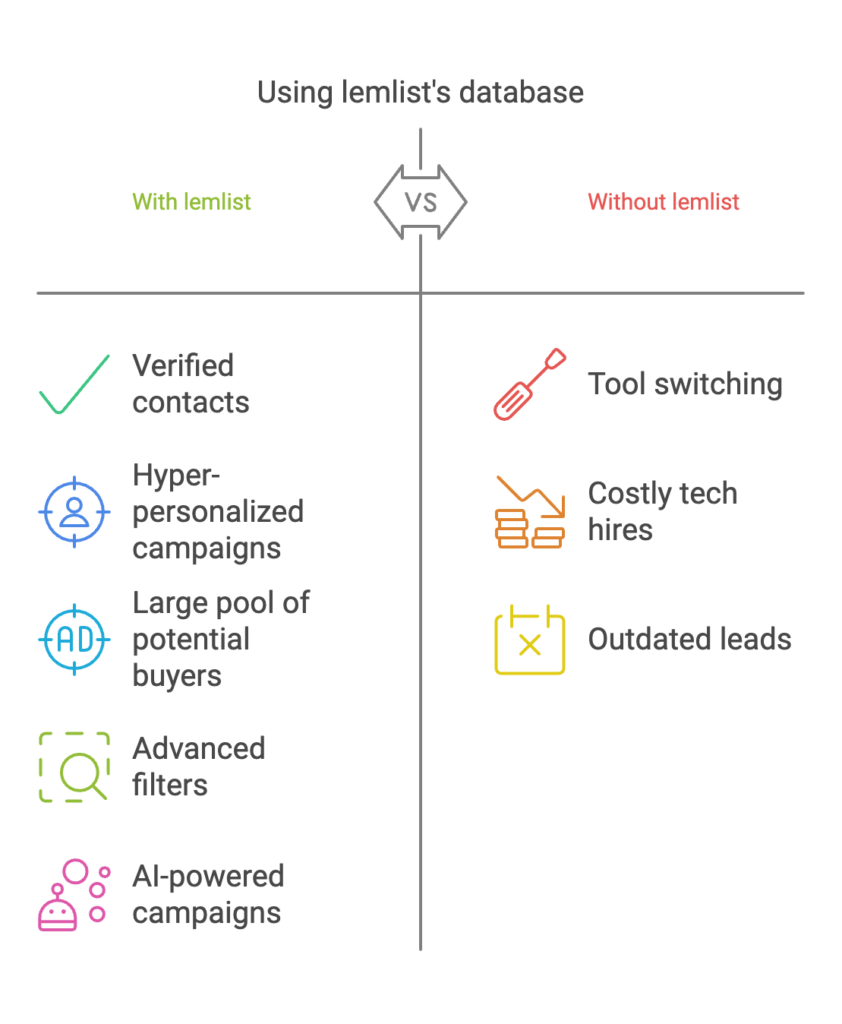
P.S. With each lemlist plan you’ll get free credits to find leads!
Sign up for lemlist now to get your first 100 free leads!
Your source of actionable outreach tips and strategies that will help you get replies and grow your business.

